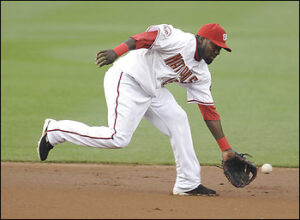
In-Season Baseball Strength and Conditioning: Part 2 – High School Baseball
In case you missed Part 1 of this series on In-Season Baseball Strength and Conditioning, you can check it out HERE.
Today, I’ll be discussing how to attack in-season training for high school baseball players. I’ll divide things up between position players (plus catchers) and pitchers.
Position Players/Catchers
With our position players and catchers, we typically opt for two full-body strength training sessions per week. Some players, however, will opt for shorter, more frequent training sessions. This may be the case for “gym rats” who feel better when they lift more often, or those who simply aren’t getting much playing time and really want to continue developing.
These players get enough movement training just from taking ground balls and sprinting during warm-ups and practices, so there usually isn’t any need to add extra movement training to their programs.
We also keep medicine ball volume down because they’re already doing a lot of high volume rotation with their throwing and hitting. They’ll do their foam rolling and mobility work daily, though.
Pitchers
High school pitchers are challenging to train because most are two-way players – meaning that they play a position in the field when they aren’t pitching. As a general rule of thumb, I encourage kids to avoid catching and playing SS/3B if they are going to pitch regularly, as the throwing volume really adds up. If a young athlete pitches fewer than three innings per week, though, we just train him like we would a position player, but try to make sure that at least one of these training sessions comes the day after throwing. I like this approach because it not only “consolidates” stress into a 24-hour block to allow for better recovery, but it also forces a kid to go through his mobility drills, soft tissue work, and manual stretching with us to “normalize” his range of motion after a throwing appearance.
If a pitcher throws more than three innings per week, it’s best to try to pin down one particular day of the week when he is a starter. If he starts on Friday, he’d want to lift Saturday and Monday or Tuesday. Moreover, if he strength trains on Monday, he’ll have the option of getting in another good brief, light session on Wednesday. Like the position players, our pitchers take part in daily foam rolling and mobility work.
Sample Schedule for a Position Player/Catcher with games on MoWeFr
Su: off completely
Mo: Game
Tu: Practice and Strength Training (shorter option)
We: Game
Th: Practice, but no strength training
Fr: Game
Sa: Practice, Strength Training (longer option)
I may deviate from this schedule and do a bit more (added Thursday strength training session) with a younger player who needs to develop (usually have fewer practices/games, anyway) or someone who is not getting all that much playing time.
Sample Schedule for a Pitcher with only one start per week (same as college pitchers on 7-day rotations)
Mo: Pitch
Tu: Strength Training (lower body emphasis, core, and light upper body)
We: Movement Training
Th: Low Volume Medicine Ball Work, Strength training (upper emphasis, plus low volume lower)
Fr: Movement Training
Sa: Very light Strength Training (mostly upper and core work)
Su: off completely
If this pitcher was playing the field on non-pitching days, we’d simply drop the movement training and eliminate either the Thursday or Saturday strength training session.
This obviously doesn’t include the throwing program component, which we find it a bit different for everyone. I will say, though, that most of our guys tend to long toss the furthest on Wed/Thu and throw their bullpen on Fri/Sat. They’d be playing catch on some of the other days, too, of course.
Tomorrow, I’ll be back with my approaches to in-season strength and conditioning for college baseball players.




